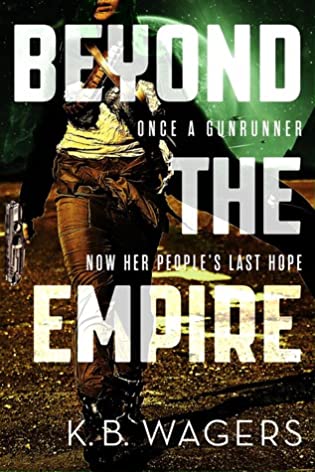 Beyond the Empire (The Indranan War, #3) by K.B. Wagers
Beyond the Empire (The Indranan War, #3) by K.B. Wagers Format: eARC
Source: purchased from Amazon
Formats available: paperback, ebook, audiobook
Genres: science fiction, space opera
Series: Indranan War #3
Pages: 416
Published by Orbit on November 14, 2017
Purchasing Info: Author's Website, Publisher's Website, Amazon, Barnes & Noble, Kobo, Bookshop.org
Goodreads
The adrenaline-fueled, explosive conclusion to the Indranan War trilogy by K. B. Wagers.
Gunrunner-turned-Empress Hail Bristol was dragged back to her home planet to take her rightful place in the palace. Her sisters and parents have been murdered, and the Indranan Empire is reeling from both treasonous plots and foreign invasion.Now, on the run from enemies on all fronts, Hail prepares to fight a full-scale war for her throne and her people, even as she struggles with the immense weight of the legacy thrust upon her. With the aid of a motley crew of allies old and new, she must return home to face off with the same powerful enemies who killed her family and aim to destroy everything and everyone she loves. Untangling a legacy of lies and restoring peace to Indrana will require an empress's wrath and a gunrunner's justice.
My Review:
This rose to the top of the TBR pile because my husband is playing the Mass Effect Legendary Edition and has been for the past three weeks. We’ve both played the Trilogy before, so we both know how the story ends. I picked up Beyond the Empire because I was looking for a female-led big space opera story (he’s playing as FemShep) that hopefully doesn’t have as heartbreaking an ending as Mass Effect 3 did. Does. That entire third game is a goddamn farewell tour and it just hurts. I may not replay it after all because as the old song says, “you won’t read that book again because the ending’s just too hard to take.”
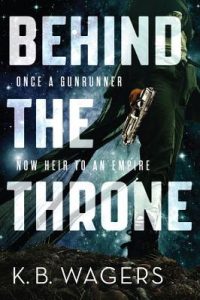 The action of Beyond the Empire follows directly upon the events of After the Crown, which, in its turn, started just about the minute after Behind the Throne ended. In other words, this is not the place to begin Hail’s story. If you love big space operas with snarky heroines and dirty, rotten underhanded politics as much as I do, start with Behind the Throne and be prepared to immerse yourself in a fantastic binge read.
The action of Beyond the Empire follows directly upon the events of After the Crown, which, in its turn, started just about the minute after Behind the Throne ended. In other words, this is not the place to begin Hail’s story. If you love big space operas with snarky heroines and dirty, rotten underhanded politics as much as I do, start with Behind the Throne and be prepared to immerse yourself in a fantastic binge read.
As this story begins, Hail and her company of friends, advisors and found family are on the run. In trilogy terms, this beginning is similar to the opening of The Return of the King, where the situation looks desperate and Aragorn and the Rangers have to take the Paths of the Dead while Sam has started out alone for Mordor. In other words, the situation is in a very dark place but there are ways they can retake the empire IF they are willing to take a hell of a lot of risks.
Empress Hailimi Mercedes Jaya Bristol, the empress formerly known as the gunrunner Cressen Stone, is always up for entirely too many risks. She’s just not used to so much and so many people riding on her success – or dying for her failure.
But a gunrunner-turned-reluctant-empress is the only person who could possibly rescue Hail’s friends, her found family, her loved ones and especially her empire, before it’s too late for them all.
Escape Rating A+: This was, again, the right book at the right time. Both for the Mass Effect Trilogy with a less destructive ending (any ending is less destructive and heartbreaking than the end of that saga) and for its “woman in charge who takes no prisoners” heroine. Because I’ve read too many books recently where women are at the mercy of men, and I just wasn’t there for THAT again at the moment. (Although there’s an irony in that desire that turns out to be part of the denouement of this trilogy that I’m not going to go into here.)
As Hail and company close in physically on the home planet and the capitol, and close the noose around their enemies, they also finally draw close to the architect of everything that has happened, not just in this trilogy, but in pretty much everything that has gone wrong or strange or tragic in Hail’s life since her father was killed and she ran away to become Cressen Stone and chase down his killer.
I’m referring to the mysterious “Wilson” who seems to be more ghost than man. Who has disappeared and reappeared to wreck destruction in Hail’s life over and over for the past 20 years, and who seems to be the architect – or perhaps the puppet master – behind all Hail’s recent tragedies.
The mystery of who and how and why Wilson has been after Hail’s family and her empire has lain behind every event in this series. As Hail closes in on Pashati and retaking the seat of her empire, she and her companions also close in on Wilson’s true identity and the reasons behind his decades-long campaign to destroy the Indranan Empire and its ruling family.
Wilson is clearly out for revenge for something – even if Hail has no idea what.
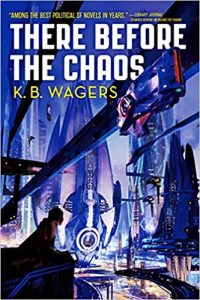 But, as that other old saying goes (a lot of old sayings seem to be turning up in this one), if revenge is a dish best served cold, then this story, in fact this whole trilogy, turns out to be a case study in what happens when someone lets their cold revenge warm up. Wilson has let his revenge heat to a boiling point, along with his temper, his ego and his aggression, and that revenge curdles as much and as badly as you think it will. But the story that results from that curdle is absolutely EPIC.
But, as that other old saying goes (a lot of old sayings seem to be turning up in this one), if revenge is a dish best served cold, then this story, in fact this whole trilogy, turns out to be a case study in what happens when someone lets their cold revenge warm up. Wilson has let his revenge heat to a boiling point, along with his temper, his ego and his aggression, and that revenge curdles as much and as badly as you think it will. But the story that results from that curdle is absolutely EPIC.
Having finished Beyond the Empire in a few all-too-brief hours, and after picking it up because I wasn’t ready to deal with another big space opera with a heartbreaking ending, I’m “pleased as Punch”, as that saying goes, to say that while Hail’s butt seems to be firmly on the throne of the Indranan Empire at the end of Beyond the Empire, her adventures are FAR from over. Her future adventures form the second trilogy in this series, The Farian War, beginning with There Before the Chaos – a fitting title if ever there was one, as Hail is usually around before, during AND after the chaos. I have it in both ebook and audio, and I’m looking forward to diving into it the next time I need a reading pick-me-up.

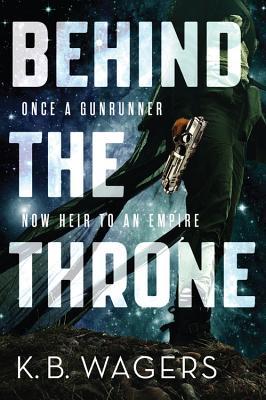 Behind the Throne (The Indranan War #1) by
Behind the Throne (The Indranan War #1) by 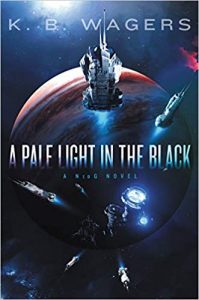 Escape Rating A++: I picked up Behind the Throne because I absolutely adored the author’s
Escape Rating A++: I picked up Behind the Throne because I absolutely adored the author’s 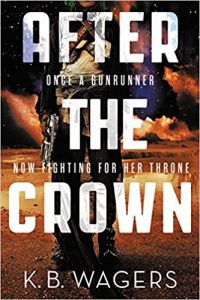 Even though they are both extremely unconventional for the positions they hold, their very unconventionality makes them not just the only people by inheritance for those positions at the time they are forced to take them, but the only people by talent, skill and capacity to pull the nuts of their respective empires out of the fires that they have inherited along with their thrones.
Even though they are both extremely unconventional for the positions they hold, their very unconventionality makes them not just the only people by inheritance for those positions at the time they are forced to take them, but the only people by talent, skill and capacity to pull the nuts of their respective empires out of the fires that they have inherited along with their thrones.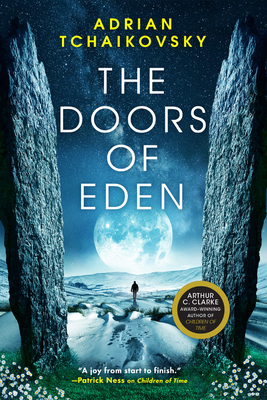 The Doors of Eden by
The Doors of Eden by 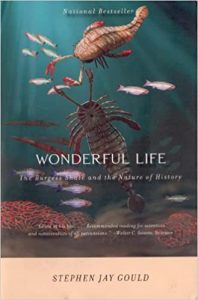 Spy games, cryptids (Sasquatch, Yetis and Loch Ness Monsters, OH MY!) with a nod to Stephen Jay Gould’s
Spy games, cryptids (Sasquatch, Yetis and Loch Ness Monsters, OH MY!) with a nod to Stephen Jay Gould’s 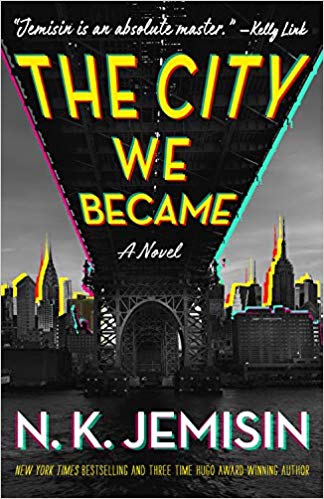 The City We Became (Great Cities #1) by
The City We Became (Great Cities #1) by 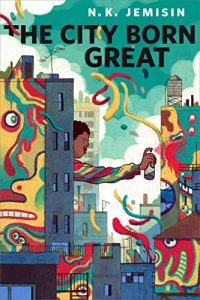 Four years ago, N.K.Jemisin published what was then a standalone short story,
Four years ago, N.K.Jemisin published what was then a standalone short story, 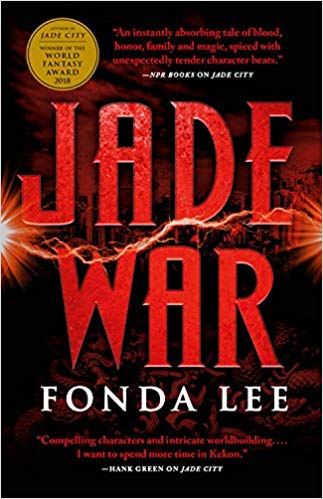 Jade War (The Green Bone Saga, #2) by
Jade War (The Green Bone Saga, #2) by 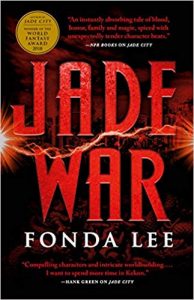 I picked up Jade War just about the minute I finished the absolutely awesome
I picked up Jade War just about the minute I finished the absolutely awesome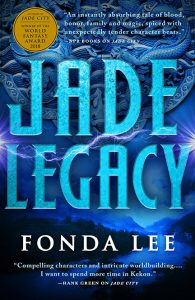 Jade War also takes this story of gangland warfare to a wider stage while telling a tale that provides standout roles for the women as well as the men of the clan AND adds a fascinating dose of world-wide political skulduggery to what was initially an urban fantasy about warring criminal organizations. The Green Bone Saga was a terrific story when it was confined to two families and one city. Now that it has gone world-wide, it is epic in every sense of the word. This is one of those books that just needs a higher grade than A+. Seriously, all the stars for this one.
Jade War also takes this story of gangland warfare to a wider stage while telling a tale that provides standout roles for the women as well as the men of the clan AND adds a fascinating dose of world-wide political skulduggery to what was initially an urban fantasy about warring criminal organizations. The Green Bone Saga was a terrific story when it was confined to two families and one city. Now that it has gone world-wide, it is epic in every sense of the word. This is one of those books that just needs a higher grade than A+. Seriously, all the stars for this one.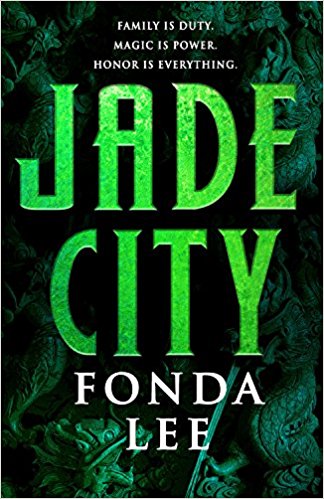 Jade City (The Green Bone Saga, #1) by
Jade City (The Green Bone Saga, #1) by 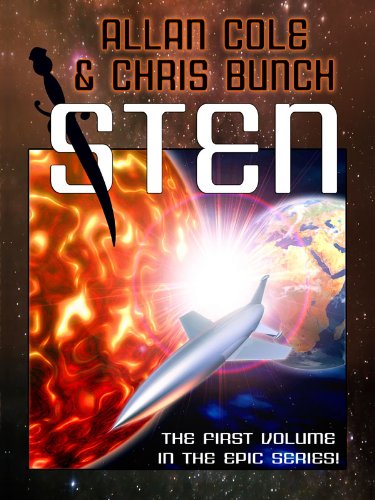 Sten by
Sten by 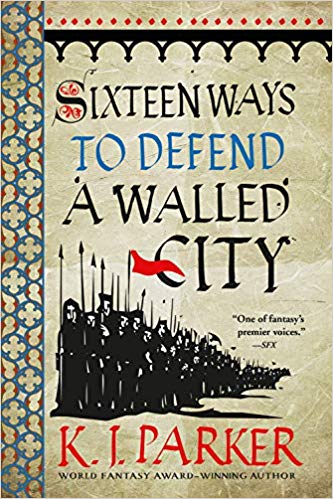 Sixteen Ways to Defend a Walled City by
Sixteen Ways to Defend a Walled City by 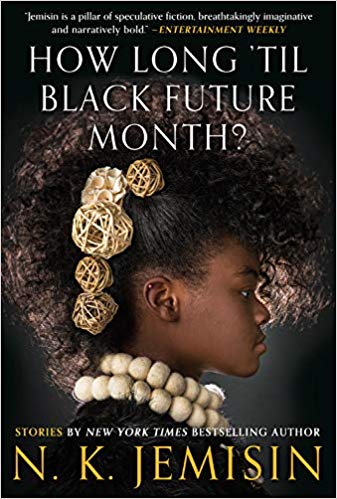 How Long 'til Black Future Month? by
How Long 'til Black Future Month? by 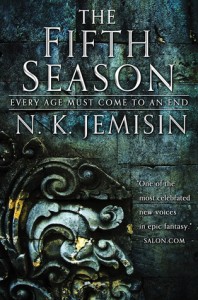 Personally speaking, I loved her
Personally speaking, I loved her 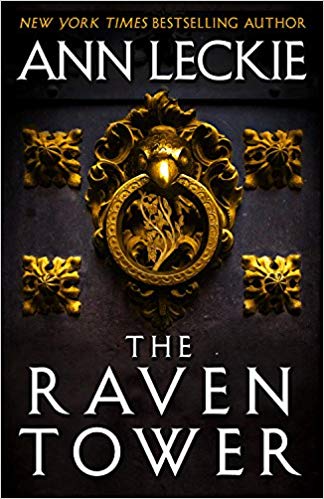 The Raven Tower by
The Raven Tower by